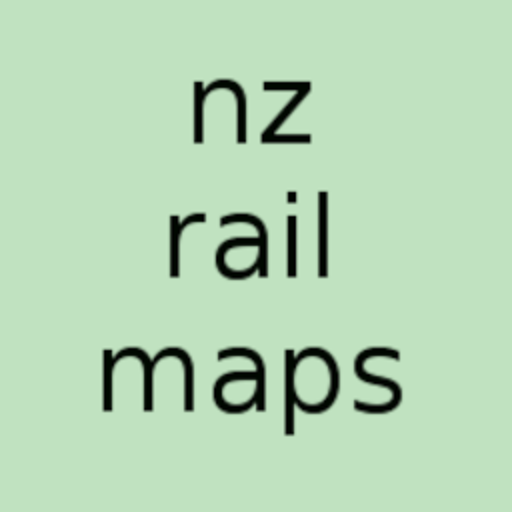Woodside Railway Station started off its life as the junction for the 5 km branch to Greytown. It came about that when the Public Works Department (PWD), later on the Ministry of Works and Development or MOWD, which was responsible for constructing the early railways of New Zealand, put together the plans for the Wellington Woodville Railway, as the Wairarapa Line was then known, they decided on a route that took in Featherston, Carterton and Masterton, but left out Greytown and Martinborough. It would have been difficult to take in all five of these locations, which to this day are the main population centres of the Wairarapa region, but Greytown got a raw deal because taking the line via their township would have only been a small change relatively speaking to the railway as it stood. It was not as if there were other major areas of populace that had to be served by the route that was adopted for the WWR. So, this led to the need to placate the people of Greytown by giving them a miniscule branch line. Just exactly why it was impossible to take the WWR via Greytown is something of a mystery but possibly was driven by an extreme cost cutting mentality. It would be interesting to see just how much was saved by adopting the chosen route and whether it would have saved more than 5 km which was needed to connect Greytown with the main line. In any case that was what happened. The Wellington Woodville Railway was opened to Greytown in 1880, and Greytown (not Woodside) was actually the terminus for a few months until the next section opened to Masterton. After that, Greytown was a branch that managed to last for 73 years before succumbing to road transport competition.
Woodside has had three lives basically, firstly as the branch junction, secondly as a sleepy rural station, and thirdly as a commuter train station as it now is. As it happens, all three of these states are neatly illustrated by the maps that have been completed today and will follow in this article. The changes to Woodside over these three stages have been considerable.

So as we can see with this composite diagram of the whole site, it is quite a messy tale. We shall break this down a bit more in the larger scale images to follow, but the first stage was as a branch junction, so for that stage, there was an island platform on the right side of the line. Passengers on the main line trains would get off to change to the Greytown trains which only ran between Woodside and Greytown. The branch itself had two loop sidings off it within the Woodside yard. There were another two sidings off the main line on the opposite side of the platform. There were also three railway houses, and two of them are still there today. The second layout has a platform to the left instead of the right, and goods yard sidings on the right instead. The third layout is just the main line but there is a park and ride carpark added on the left. So the tracks have all moved around as well as the other facilities. What is notable is that as long as Greytown was open, there was no goods yard at Woodside; as soon as Greytown closed the goods yard at Woodside was opened. Clearly Woodside took over from Greytown when the branch closed and there was seen to be no purpose in having two complete stations so close together.
So getting down into a more detailed view at a larger scale here is the diagram of the “south” end of Woodside.

There is not much to see on this diagram except for the goods yard sidings on the south side. These were installed when Woodside took over from Greytown in 1954. They were not original from 1880.
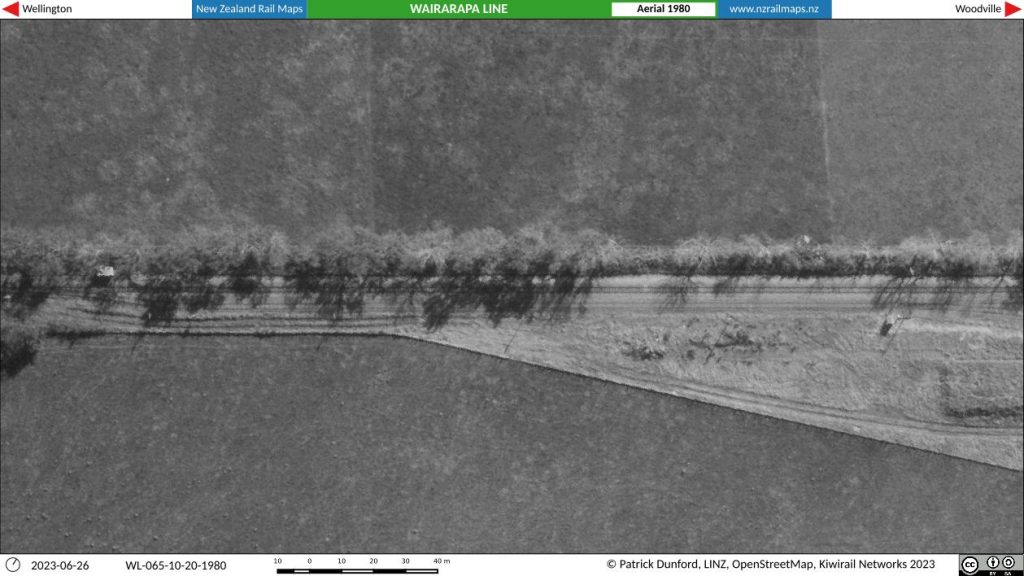
A good view from 1980 showing the sidings. Today there is nothing there.

The “central” part of Woodside is showing on this diagram. Here we can see on the north side the beginning of the two loops that were there from 1880 to 1954, and on the south side are the goods yard from 1954 and the beginning of the island platform from 1880. The goods shed was made out of the station building from Greytown that was relocated. One thing that isn’t clear is when Woodside was closed to freight traffic; but we do know that the goods shed has not been used for that purpose in many years. Kiwirail held ownership of the shed, and presumably leased it, until 2015 when it was put up for sale.
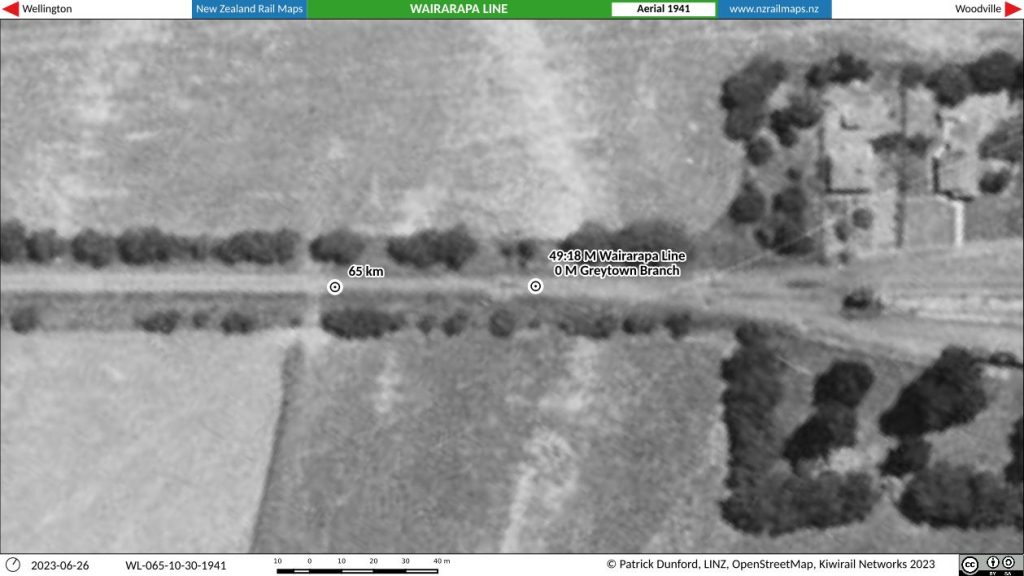
1941 aerial of the station. The island platform is hard to pick out. The main line and two loops on the north side and the branch and another two loops on the south side.

1980 view of the station showing the main goods yard with the two loop sidings, one of which serves the goods shed (converted from the Greytown station).
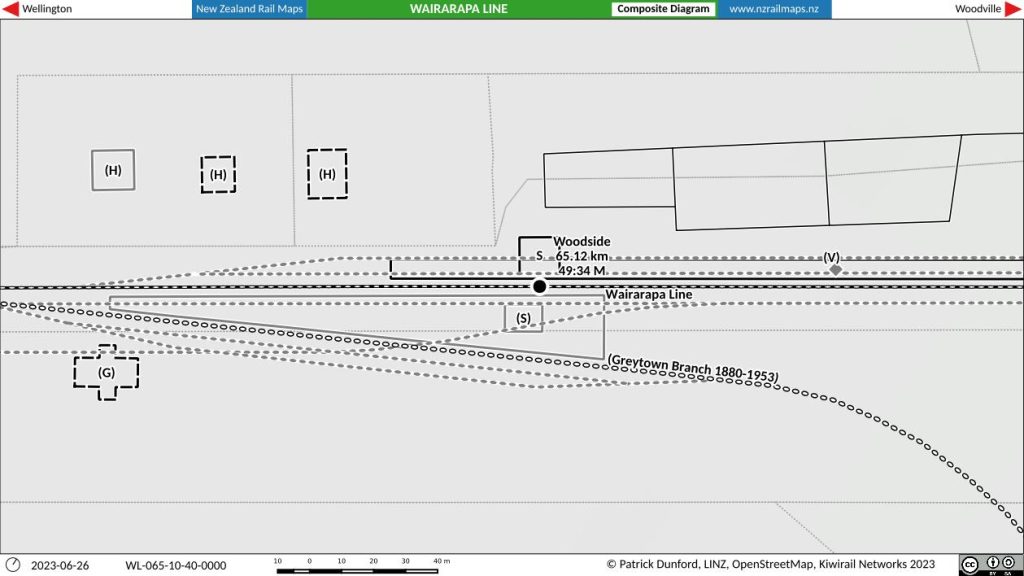
The main part of the yard showing all the different parts. As can be seen the station was nearly opposite where the current station site is. The island platform and various sidings as well as the current platform and all three houses are clearly visible.

A reasonably clear 1941 view of the first stage station. The station building sits on the island platform with the branch curving away lower right.

The station in its revised post-1954 layout.
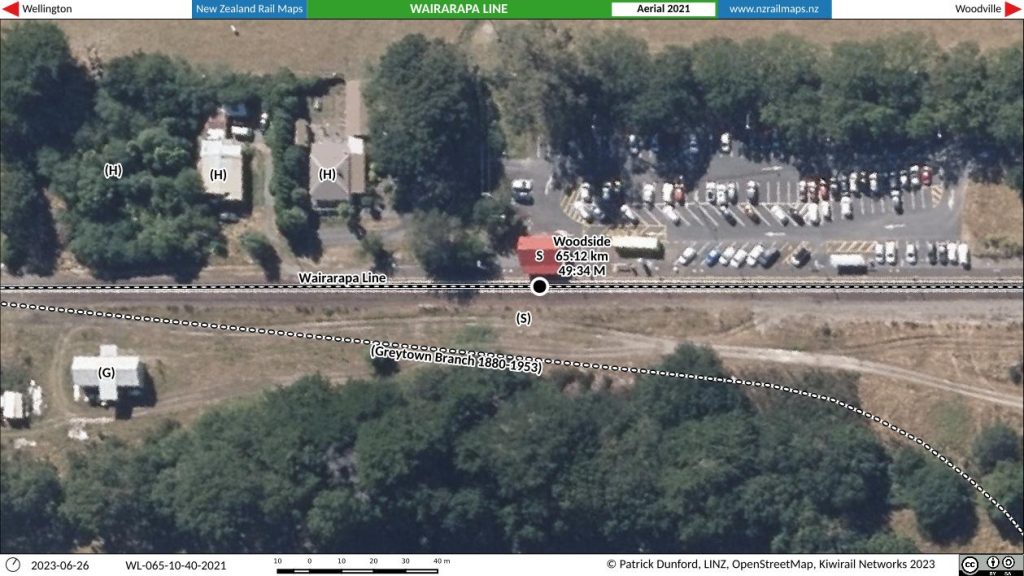
Woodside in 2021. The goods yard has gone but the old yard lingers on. The park and ride carpark is the main new feature in this view.

The “northernmost” end of Woodside (technically it is the easternmost but in railway terms, it is north). We’ll skip any aerial views for now.
So that is all about Woodside. The maps of Woodside will be put into the Greytown Branch ones when they are completed. We will have a look at Greytown next time and then release the full set of maps for the branch that will include all the ones for Woodside rather than just the few that have been chosen for this post.
